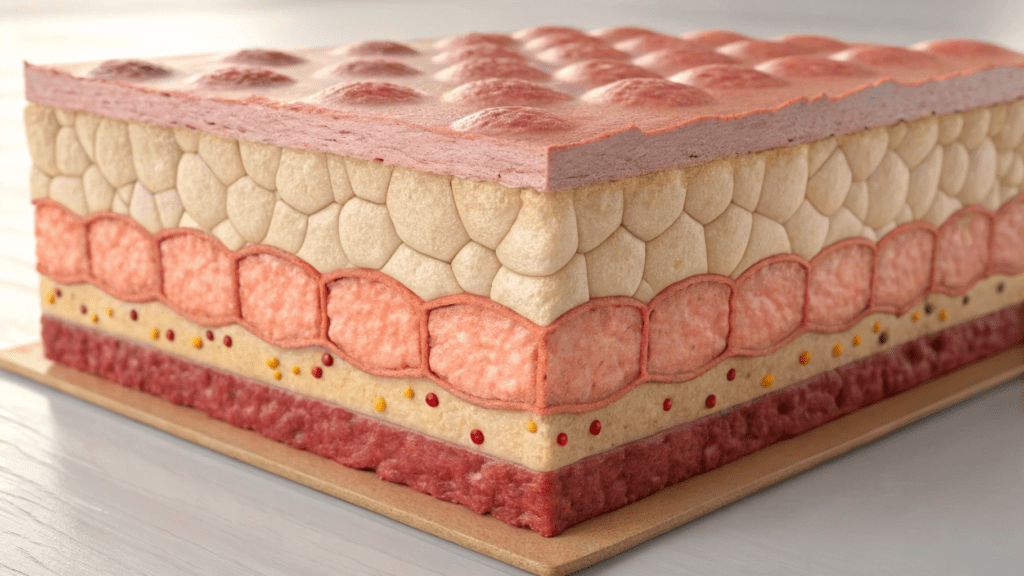
Ever catch yourself flipping through pictures and wondering, “Why does her skin look so smooth while mine’s got more dents than an old couch?” I know I have. You can’t help but wonder, “Am I just unlucky, or is this something inherited from my family?” Is cellulite truly inherited, or is it a condition that can be addressed? The reality might surprise you, but don’t worry; I’ll explain it in a way that’s simple for you to grasp. In this article, I will reveal the truth about cellulite and the actions that can be taken to address it.

What Triggers Cellulite, Exactly?
Before we start accusing our parents, let’s pause for a moment to explain what cellulite actually is. For instance, you may have noticed that “orange peel” appearance can develop on thighs, buttocks, or even arms. That’s cellulite, indeed. It occurs when fat protrudes through the connective tissues under your skin. In other terms, it resembles attempting to force a balloon through a chain-link barrier. Consequently, what you observe are those small bumps and irregular areas that we all recognize quite well.
But here’s the twist: cellulite is not solely about fat. It’s a combination of:
- Skin structure
- Hormonal changes
- Blood flow
- And yes, genetics
Does Cellulite Affect “Women Only”?

Not at all! Men are not entirely exempt from cellulite, even though 90% of women have it at some point. The reason why it affects women more? hormones and the structure of the skin.
Men’s connective tissues are formed differently, making cellulite less obvious, but women’s tissues are constructed to allow fat to pass through more readily. Additionally, guys often have lower body fat percentages.
What Actions You Can Take Regarding It


If you’re there wondering, “Fantastic, I’m cursed by my DNA,” don’t fret. You can do many things to lessen the visibility of cellulite—even if it is hereditary.
- Keep yourself hydrated: Dry skin reveals dimples more prominently. Increase your water intake, and you’ll see your skin appearing firmer and more even.
- Get that body moving: Working out, particularly strength training, aids in developing muscle beneath your skin. That solid base can lessen the uneven appearance.
- Eat wisely: Foods high in antioxidants, nutrients that promote collagen, and healthy fats can enhance skin texture and elasticity.
- Consider specific treatments: Techniques like dry brushing and the application of topical creams containing caffeine or retinol can provide temporary skin smoothness.
- Seek expert assistance: For more significant results, laser procedures and radiofrequency treatments can be beneficial.
Some Cellulite Myths You Should Disbelieve
Let’s dispel some of the fallacies surrounding cellulite that are currently circulating!

Myth #1: Cellulite Only Occurs in Overweight People
Cellulite can also affect athletes and supermodels. The distribution of fat is more significant than its amount.
Myth #2: If you lose weight, cellulite will disappear.Totally
Losing weight can help, but it won’t completely eliminate cellulite. In fact, the loose skin brought on by rapid weight loss can sometimes make it more noticeable.
Myth #3: Miracle Remedies for Cellulite
Creams containing retinol or caffeine can temporarily smooth skin, but they cannot remove cellulite. A combination of expert treatments, exercise, and diet is needed for long-term outcomes.
The Final Conclusion
Indeed, genetics can affect cellulite, but it isn’t entirely predetermined. With effort and the right approach, you can alter its look—no matter what your genes suggest. Thus, while you might lack the power to alter your genes, you definitely have the potential to improve your looks and boost your confidence in your body.
What strategies have been most effective for you in dealing with cellulite? Please share your tips and tricks in the comments below—I’m eager to hear from you!




